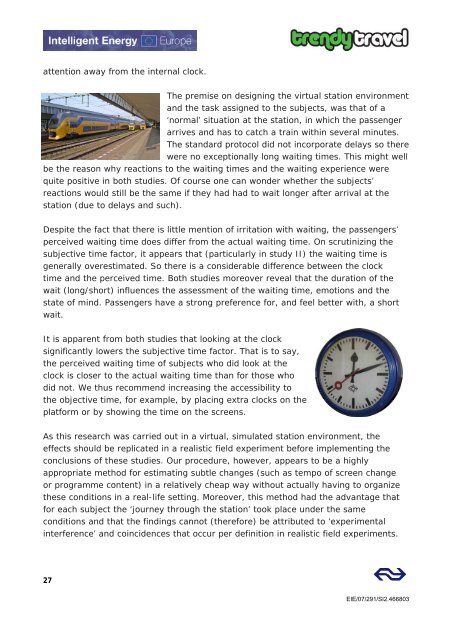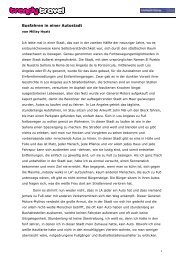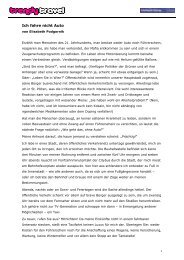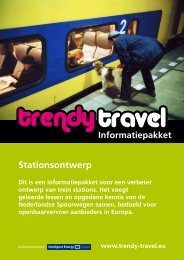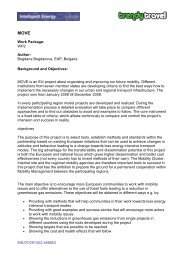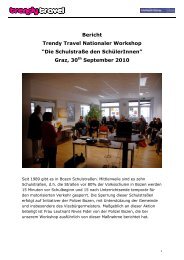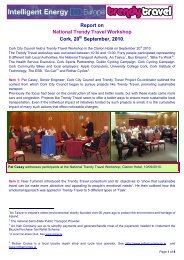Resource Pack: Railway Station Design - Eltis
Resource Pack: Railway Station Design - Eltis
Resource Pack: Railway Station Design - Eltis
Create successful ePaper yourself
Turn your PDF publications into a flip-book with our unique Google optimized e-Paper software.
attention away from the internal clock.<br />
The premise on designing the virtual station environment<br />
and the task assigned to the subjects, was that of a<br />
‘normal’ situation at the station, in which the passenger<br />
arrives and has to catch a train within several minutes.<br />
The standard protocol did not incorporate delays so there<br />
were no exceptionally long waiting times. This might well<br />
be the reason why reactions to the waiting times and the waiting experience were<br />
quite positive in both studies. Of course one can wonder whether the subjects’<br />
reactions would still be the same if they had had to wait longer after arrival at the<br />
station (due to delays and such).<br />
Despite the fact that there is little mention of irritation with waiting, the passengers’<br />
perceived waiting time does differ from the actual waiting time. On scrutinizing the<br />
subjective time factor, it appears that (particularly in study II) the waiting time is<br />
generally overestimated. So there is a considerable difference between the clock<br />
time and the perceived time. Both studies moreover reveal that the duration of the<br />
wait (long/short) influences the assessment of the waiting time, emotions and the<br />
state of mind. Passengers have a strong preference for, and feel better with, a short<br />
wait.<br />
It is apparent from both studies that looking at the clock<br />
significantly lowers the subjective time factor. That is to say,<br />
the perceived waiting time of subjects who did look at the<br />
clock is closer to the actual waiting time than for those who<br />
did not. We thus recommend increasing the accessibility to<br />
the objective time, for example, by placing extra clocks on the<br />
platform or by showing the time on the screens.<br />
As this research was carried out in a virtual, simulated station environment, the<br />
effects should be replicated in a realistic field experiment before implementing the<br />
conclusions of these studies. Our procedure, however, appears to be a highly<br />
appropriate method for estimating subtle changes (such as tempo of screen change<br />
or programme content) in a relatively cheap way without actually having to organize<br />
these conditions in a real-life setting. Moreover, this method had the advantage that<br />
for each subject the ‘journey through the station’ took place under the same<br />
conditions and that the findings cannot (therefore) be attributed to ‘experimental<br />
interference’ and coincidences that occur per definition in realistic field experiments.<br />
27<br />
EIE/07/291/SI2.466803


